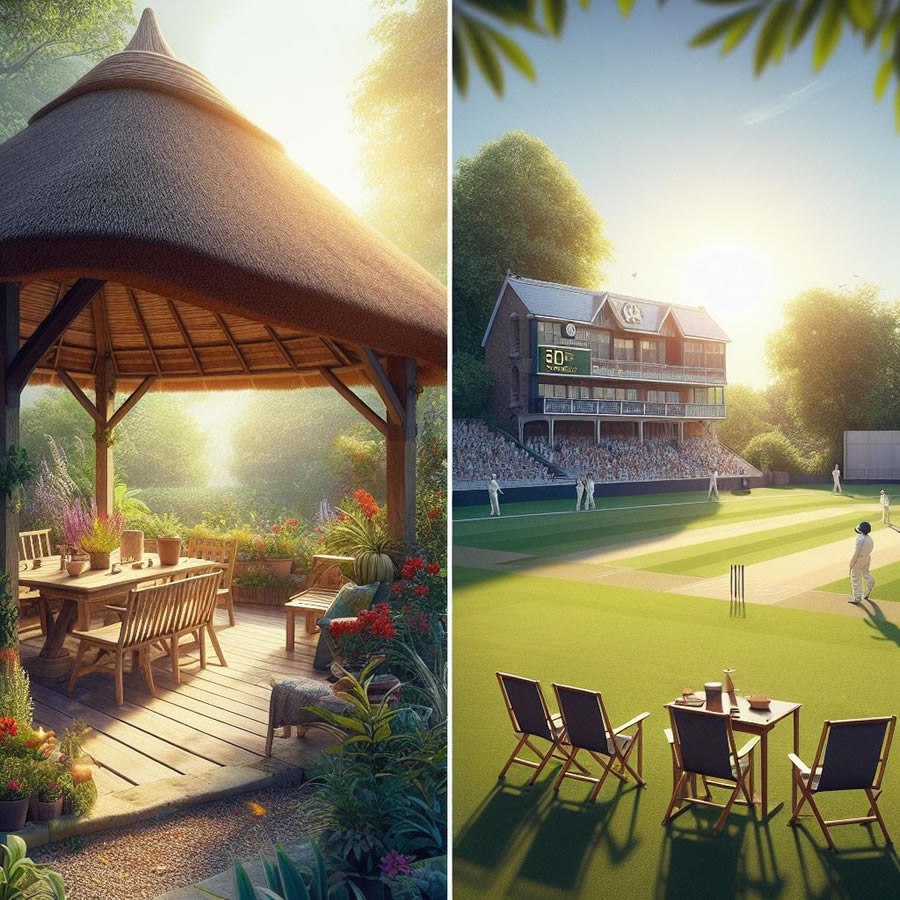Blog
Exploring the Contrasts: Garden Pavilion vs. Cricket Pavilion
Introduction: Defining Garden and Cricket Pavilions
In the world of outdoor architecture, pavilions serve as focal points that enhance the functionality and aesthetics of various spaces. While garden pavilions and cricket pavilions share a similar name, they serve vastly different purposes and boast unique characteristics. In this exploration, we delve into the distinctions between garden pavilions and cricket pavilions, shedding light on their respective roles in outdoor environments.
Garden Pavilions: Tranquil Retreats Amidst Nature
Garden pavilions are architectural structures designed to enhance the beauty and functionality of garden landscapes. These elegant edifices serve as tranquil retreats where individuals can relax, socialise, or simply enjoy the natural surroundings. Garden pavilions often feature open-air designs with ornate detailing, providing shelter from the elements while allowing occupants to bask in the beauty of their surroundings. These structures are typically found in private gardens, parks, and other outdoor settings where they add a touch of charm and sophistication to the landscape.
Cricket Pavilions: Sporting Hubs for Teams and Spectators
In contrast, cricket pavilions are purpose-built facilities that cater specifically to the needs of cricket teams and spectators. These structures serve as central hubs where players gather to prepare for matches, strategise during breaks, and celebrate victories. Cricket pavilions also provide amenities for spectators, including seating areas, refreshment facilities, and sometimes even changing rooms. Unlike garden pavilions, cricket pavilions are often located within or adjacent to cricket grounds, where they play a vital role in facilitating the sport and enhancing the overall spectator experience.
Purpose and Functionality
The primary difference between garden pavilions and cricket pavilions lies in their purpose and functionality. While garden pavilions are designed primarily for relaxation and socialising in outdoor settings, cricket pavilions are dedicated facilities that support the practice and enjoyment of cricket matches. Garden pavilions serve as aesthetic enhancements to gardens and parks, providing sheltered spaces for leisure activities and intimate gatherings. In contrast, cricket pavilions are integral to the infrastructure of cricket grounds, offering essential amenities for players and spectators alike.
Design and Architecture
Another key distinction between garden pavilions and cricket pavilions is evident in their design and architecture. Garden pavilions often feature ornate detailing, intricate carvings, and other decorative elements that reflect their role as focal points in garden landscapes. These structures are characterised by their open-air designs, with spacious interiors that invite occupants to enjoy the surrounding scenery. In contrast, cricket pavilions typically have a more utilitarian design, with practical features such as changing rooms, storage areas, and viewing platforms for spectators. While some cricket pavilions may incorporate architectural flourishes, their primary focus is on functionality rather than aesthetics.
Role in Outdoor Spaces
Despite their differences, both garden pavilions and cricket pavilions play important roles in enhancing outdoor spaces and fostering community engagement. Garden pavilions create inviting retreats where individuals can connect with nature and each other, enriching the overall ambiance of gardens and parks. Cricket pavilions, on the other hand, provide essential facilities that support the practice and enjoyment of cricket matches, ensuring that players and spectators alike have a comfortable and enjoyable experience. While their purposes may differ, both types of pavilions contribute to the vitality and vibrancy of outdoor environments.
Conclusion: Embracing Diversity in Outdoor Architecture
In conclusion, garden pavilions and cricket pavilions represent two distinct expressions of outdoor architecture, each with its own unique characteristics and contributions. Garden pavilions serve as serene retreats amidst nature, providing sheltered spaces for relaxation and socialising in garden landscapes. Cricket pavilions, on the other hand, are purpose-built facilities that support the practice and enjoyment of cricket matches, offering essential amenities for players and spectators alike. By understanding the differences between these two types of pavilions, we can gain a deeper appreciation for the diversity and richness of outdoor architecture, and the unique roles that each structure plays in shaping our outdoor environments.
Disclaimer: This information is subject to change and as such, is provided for informational purposes only and does not constitute professional advice. Readers are encouraged to verify the details independently.

